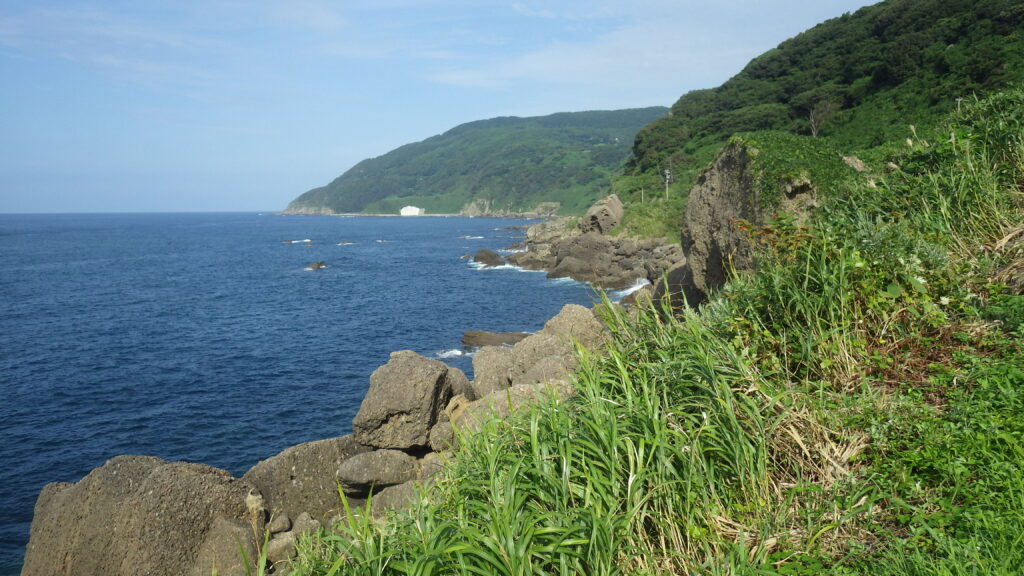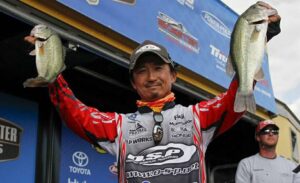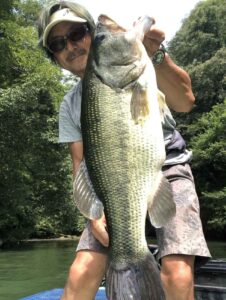Earthquake in Hokuriku, its effect on Fishing Industry in Japan, and Your Support
There was a big earthquake in Japan on the 1st of January in 2024. The shake from the oceanic plates right on the Noto peninsula in the region of Hokuriku brought the earthquake of magnitude 7.6 and tsunamis.
In this article, I review the related area from a fishing point of view, and show the possible effects of the earthquake on the fishing and angling industry in Japan.
Hokuriku region and Noto Peninsula
The Noto Peninsula is in Ishikawa prefecture, located in the Hokuriku region.
The epicenter of the earthquakes are on the northern side of this peninsula.
The areas where the dots of yellow and red are called the Hokuriku region. You can see that the entire Hokuriku region was getting the shake of level 4 or more (of seismic intensity.)
(Note: Seismic intensity is the degrees of shaking strength scaled by the effects on practical or everyday matters. For example, the level 5 is the shake that most people cannot walk without holding something.)
In this Hokuriku region, there are about 5 million people (4% of Japan’s total of 125 million.) This area has the economy of about 21 trillion JPY (GDP,) 4% of about 500 trillion JPY Japan total. Ishikawa prefecture, where the peninsula is located, has a 1.1 million population, with the size of economy as 4.8 trillion JPY. As you can see from these, this area does not have big cities and the effect of the total Japanese economy is not immense. However, as you can see from the map, you can guess it is in a very good place for fishing.
This peninsula is washed by the warm oceanic current, and its complex coastlines are the home of various kinds of fish.

Commercial fishing is one of the most important industries in the area. Pacific bluefin tuna, Japanese pilchard (Sardine), Japanese anchovy, Japanese jack mackerel, Chub mackerel, Japanese amberjack, Flounders (so called red founder in Japanese,) Pacific cod, Japanese spanish mackerel, squid species, crabs and shrimps. These are the fish species you can catch in the sea around Hokuriku.
From the leisure fishing point of view, this area is famous for the Japanese amberjack, with the jigging and casting. While the eastern side of the sea is shallower, the Toyama Bay (between the peninsula and the main island) has the trench and it makes the sea environment diverse there.
In Ishikawa prefecture only, there were 1,176 individuals and 79 organizations who were involved in fishing commercially, in 2018. In Japan total, in the same year, there were about 79,000 individuals and organizations in commercial fishing. You can see that the higher percentage of population in the area is involved in fishing.
Angling in the area and the effect of the earthquake
There are about 40 fishing tackle shops, and there are 15 to 20 fishing boat service companies in Ishikawa prefecture. Including the areas where the strong shake hit, there must be about 100 shops that may be getting the negative effect from the earthquake.
On top of that, if you consider the related indirect effects, such as some employees' houses collapsing and needing some time away from the shop, then the effect could be bigger than that.
Since angling is a leisure activity, people there or nearby are hesitating to go fishing though they do not receive any damages. We can call it a psychological suppression for leisure after a disaster.
Though there is no direct research of such a psychological effect in leisure fishing, we have research articles of such effect in the hospitality industry.
One of such articles about the study of hotel business is arguing this. Even in the unaffected areas, there is a significant decrease in demand. Along with it, the areas directly affected by the disaster have the lasting effect of the disaster at least for 10 months. The entire article can be viewed from this link (Japanese only).
This article researched the effects after the earthquake in Tohoku, which occurred in March of 2011. You can see the details of this earthquake from this link. The earthquake’s epicenter was on the east side of Honshu mainland.
From the map above, you can see that there were lasting negative effects (shrinking demand) in the devastated area after 9 months of the disaster. Putting aside that there was news on the nuclear power plant in Fukushima (in the map of the east coast at the height of “(%)” indication,) there were no signs of recovery in the northern part of the east coast.
Additionally, what we can see is that even the other side of the island, which did not have any effect, had the lowered demand for about 6 months.
From this, in this Hokuriku earthquake, there may be a lowered demand for at least 3 to 4 months. While the scale of its total damage is not as big as that of the 2011 earthquake, I hope that the total Japanese economy is affected by it minimally, and it can support the quickest recovery in the Hokuriku region.
Since the above research article is on the hotel industry, the effect may differ in the angling industry. Imaginable things are that the angling business in damaged areas is suppressed much stronger or more directly by it, and the total recovery of such sea related leisures takes much longer than the average recovery of the hospitality industry.
Lucky Craft
The retail side is one point, but we cannot forget about the manufacturing sectors in the industry.
Unfortunately, among the manufacturers of fishing tackle in Japan, Lucky Craft has their own lure factory in Ishikawa prefecture of Hokuriku.
They have lure factories in Nanao city of Ishikawa prefecture.
Though there is no detailed updated information available, their production facilities were damaged, and normal production cannot be carried out. Additionally, there are employees whose houses were damaged or issues with relatives, and there are missing human resources.
Lucky Craft's official Instagram post on the 1st of January was describing that the factory was messed and ruined. And it added that it requires efforts to recover. (Link to their post)
Lucky Craft has been selling lures since 1990’s, and has been operating their production in Japan. After the late 1990’s, it founded the Lucky Craft USA and started their ventures of selling Japanese made lures into the country. Currently, their lures are one of the top selling Japanese brand lures globally.
We are proud of presenting the made-in-Japan product outside Japan. I personally respect them as one of the pioneering Japanese lure companies who ran their business successfully in the US and established their own solid position.
This Lucky Craft may suffer recovering from the devastation of the earthquake.
Support for the region as an angler
The case of the Lucky Craft factory is just one instance among many businesses in the region, which were damaged by the earthquake. As an angler, I would like to do something for their recovery.
I would like to suggest you to take your Lucky Craft lures from your tackle box, and use them to pray for their solid recovery. And it would be even better for you to buy one lure or two of Lucky Craft brand.
I am sure that such a small action can ultimately support Lucky Craft and the surrounding economy.

